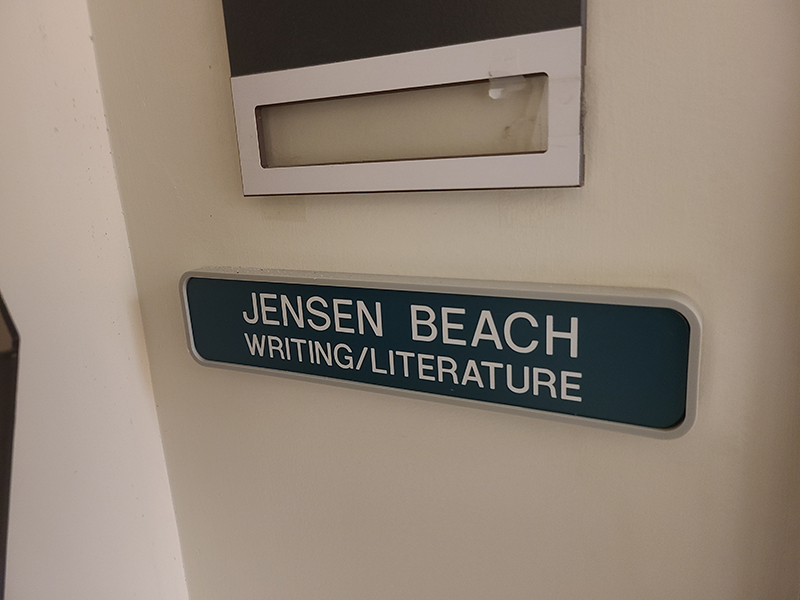In November 2012, the SGA sponsored a discussion on higher education funding in Vermont that was attended by both students and faculty. On January 10, 2013 Governor Peter Shumlin focused his Inaugural Address almost entirely on education.
Education, particularly higher education, is a largely contemplated issue in our state that affects not only students, but their parents, the faculty and the population in general. This is a point that State Senator Rich Westman made at the SGA discussion. “From my point of view, at my age in life, I think there are a lot of people in their 40’s, 50’s and 60’s that the biggest concern for them should be the fact that if young people like you don’t go into the workforce here, and instead leave, there aren’t going to be people to support the older people when they get to the place where they want to retire and they want to have a good place to live. The working population is shrinking further and further and further. I think there’s an argument for you guys to make around that, to make people understand how important it is for young people to go into the workforce here and stay here. And that demographic is someplace you should really focus your argument.”
Almost as a response to Westman’s statement, Shumlin said, “
We also know that one of the challenges we face is keeping young Vermonters in Vermont. So today, I say to the graduating class of 2013: if you make a commitment to our state, then our state will make a commitment to you. We want you in Vermont, we need you in Vermont, and we are ready to be bold in keeping you in Vermont. I propose the Vermont Strong Scholars Program. It’s a simple program, and here’s how it works: if you enroll in any public institution of higher education in the state of Vermont and graduate with a degree in a Science Technology Math Engineering (STEM) field, we will give you a helping hand to stay and work in Vermont by paying you back, over the course of five years, for your final year of tuition. Or, if you graduate with an Associate’s Degree in a STEM field, we will pay you back over three years for your final semester of tuition.”
While this plan sounds like it could solve many of Vermont’s scholars’ problems, the question arises where is the money going to come from?
Speaking of money, the distribution of funding to the Vermont colleges is also a controversial issue surrounding higher education. At the SGA discussion, Associate Professor of Writing and Literature Tyrone Shaw explained how the funding was distributed: $41 million is going to UVM, $23 million is split among the five Vermont State Colleges which include Johnson, Lyndon, Castleton, Vermont Technical College (VTC), and Community College of Vermont (CCV), and another $19 million is going to Vermont Student Assistance Corporation (VSAC). “The overall issue is how much money higher education in Vermont is allocated by the legislature, and of more concern to me is how much of that money gets allocated to the VSC,” said Shaw.
Governor Shumlin addressed this in his speech stating, “I propose to increase the state’s appropriation for the Vermont State Colleges, VSAC, and UVM by three percent to be used entirely for financial aid and scholarships for Vermonters.”
Yet again, the question arises, where is the money going to come from?
Shaw proposed an alternate idea at the SGA discussion when he anticipated the issue of “where will the money come from?” in appropriating more funds to be distributed throughout the Vermont colleges. “Many people feel that the right way to go about this is to work on the legislature to increase appropriations for higher ed [VSC, UVM, VSAC],” Shaw pointed out. “And while in the best of all possible worlds I think that’s the best outcome. Realizing in this climate that the chance of the legislature in the short term appropriating more money for higher ed in Vermont is unlikely, in terms of something that might be more reasonable, we ought to take a hard look as a state at the distribution formula, the way that $84 million is distributed.
Why should UVM who serves 3,000 full-time Vermont students receive almost twice as much as the VSC collectively which serve more than 9,000 full-time Vermont students? There is something inherently distorted about this. Then there is the issue of VSAC whose function has changed drastically after the new federal laws. I’m suggesting that a more equitable distribution of that $84 million in the short term would alleviate some of the chronic and serious underfunding issues facing the VSC,” said Shaw.
Other ideas proposed by the Governor in regards to higher education include dual enrollment and grouped Senior-Freshman years. “Dual enrollment,” urges Shumlin. “Over the past five years, state funding has provided limited access to Vermont high school students to get a headstart on gaining expensive college credit by enrolling in for-credit college courses while they are in high school. In my budget, I will propose doubling the funding to expand access to this important program. I urge you to adopt a system in which the money follows the student and all Vermont students have access to this important program.”
“Let’s also authorize an early college initiative aimed at expanding the number of students who simultaneously complete their senior year of high school with their first year of college,” said Shumlin. “For more than a decade, 40 students a year have done this at Vermont Tech, where they concentrate on science and technology with great success. Having only 40 kids in this program is a paltry number. Let’s open this program to all interested Vermont seniors, with the money following the student.”
These programs, in theory, sound progressive and perfect for solving Vermont’s higher education problems; my only concern is appropriations. In the upcoming parts of this three part series members of the state and local government along with college administrators will be asked to weigh-in on the Governor’s plans and will be asked what their own plans and opinions regarding higher education are, so keep reading.




